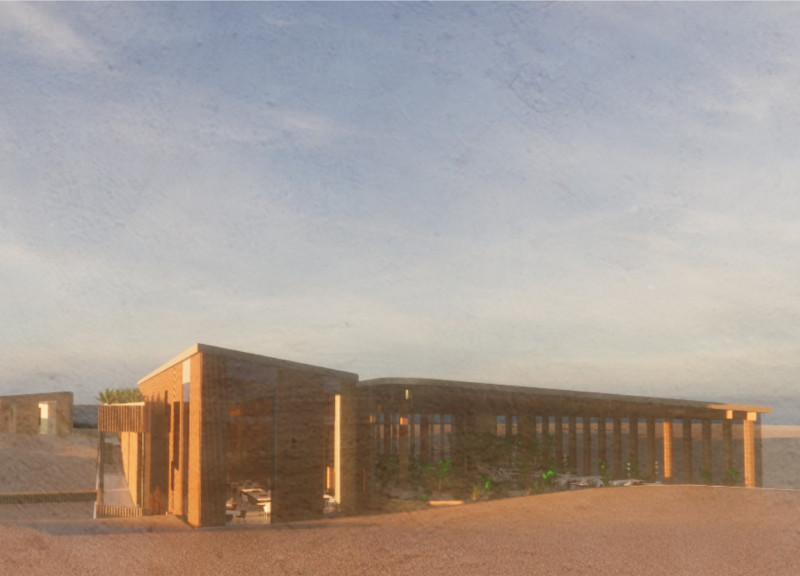5 key facts about this project
The design for Vogafjós is set in Iceland, a country known for its striking landscapes and varied climate. The project serves as a community hub, combining greenhouse functions with various multifunctional spaces. The concept focuses on creating a relationship between the constructed environment and nature, emphasizing sustainability and encouraging community engagement throughout its design.
Design Considerations
Key elements include an elevated walkway and a community exhibition space that enhance accessibility and foster interaction among visitors and local residents. A dedicated loading and off-loading area supports the movement of goods to and from the site, while a multipurpose hall allows for community events and gatherings. These features ensure a blend of functionality and accessibility, catering to the needs of an active community.
Functional Program
The layout includes various spaces, such as a greenhouse attached to a restaurant, a special dining area, and an exhibition corridor that provides views of the surrounding environment. There is also a shop for local produce and facilities for kitchen and storage, promoting local commerce. This combination of functions creates opportunities for community interaction and engagement, making the space dynamic and inviting.
Structural and Material Considerations
Though specific materials are not heavily discussed, the design focuses on integrating heat-retaining materials within the greenhouse to improve energy efficiency. This approach aligns with the ecological principles found in Icelandic architecture, where sustainability is a priority. Structures are built to endure the wet and windy climate, ensuring durability as well as functionality.
The design promotes social interactions by providing spaces that encourage involvement from local proprietors and residents. With a projected total area of about 2500 square meters and a seating capacity for 120-150 people, the planning emphasizes a careful balance between usability and visual appeal.
Large glass surfaces allow natural light to fill the space, enhancing the greenhouse environment. This design choice brings the outside in, creating an atmosphere that feels open and connected to the surrounding landscape.






















































